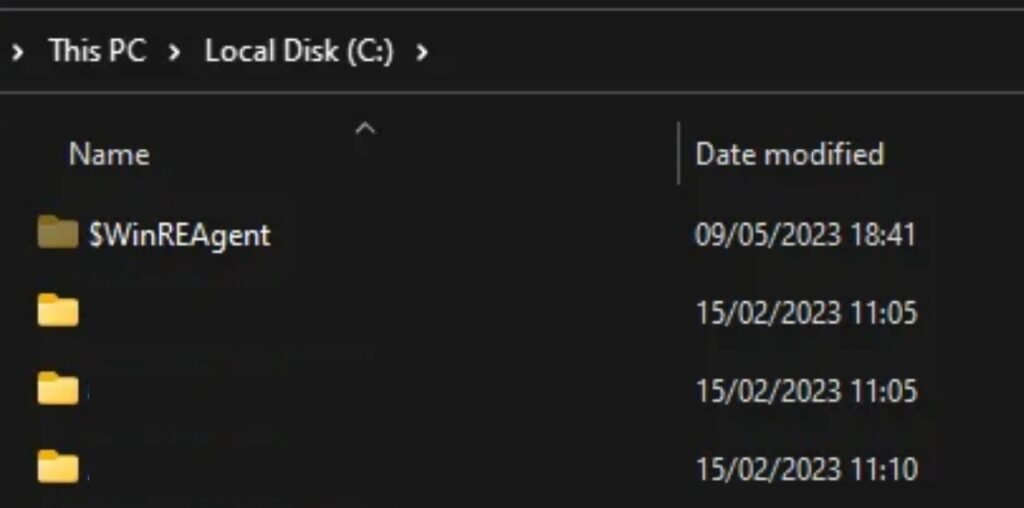Microsoft, A few days ago, acknowledged that Windows 11 update KB5034765 had issues in the installation and affected systems would find that the process hangs at about 96%. The Windows screen said:
Something didn't go as planned. No need to worry – undo the changes. Keep your computer open.
Many times even the error code “0x800F0922” appeared
The company didn't give us many details about the solution, simply stating that the issue could be “prevented with deletion of the hidden folder C:\$WinREAgent”. But today, he gave more details on how to deal with it, in two different ways.

On the Windows known issues website, the company reports:
Here are two possible ways to delete the C:\$WinREAgent folder.
1) Manually delete the folder:
To delete a hidden folder in Windows 11, you must first make the folder visible and then delete it.
Open File Explorer from the taskbar or by pressing Win+E.
Click the three dots icon and select Options.
On the View tab, select Show hidden files, folders, and drives. Click the OK button to save the change.
Now, you should see the hidden folder C:\$WinREAgent in File Explorer. Right-click on the hidden folder C:\$WinREAgent and select Delete.
2) Run one script to delete the folder:
In the search, type cmd.
From the results that appear, select the black icon, right click and "Run as administrator".
On the line orders, type the command rd /s /q “C:\$WinREAgent” and press enter.
If none appear message, the command succeeded and the folder has been deleted.
For now, Microsoft says it's investigating the bug.



